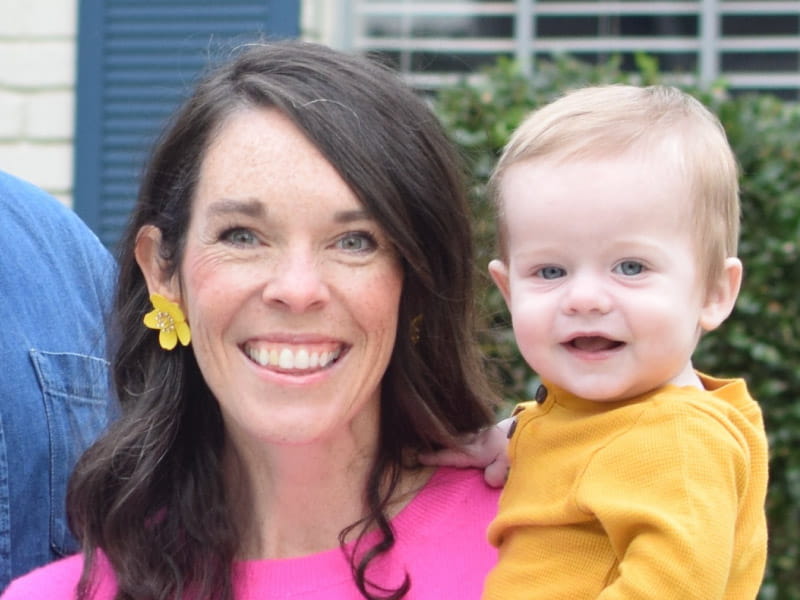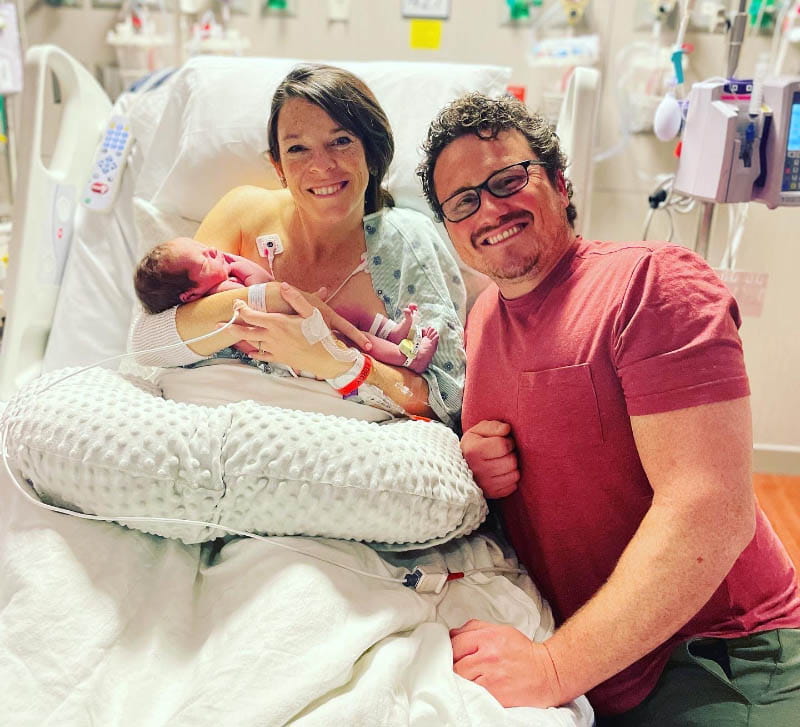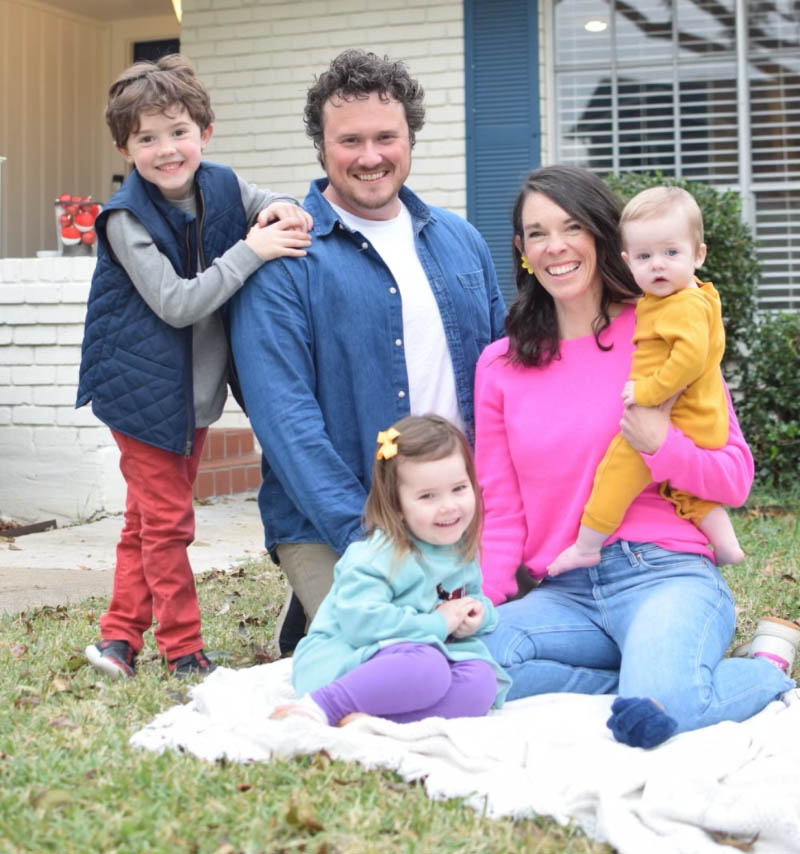Active, healthy, pregnant … and in need of a new aortic valve
By Diane Daniel, American Heart Association News

Erin Kidwell had worked all day and needed a break.
Exercise is her favorite release, so she did a few squats and jumping jacks, then headed out for a run.
Instead of being home in Dallas, she was visiting her parents in Midland, Texas. About two-thirds of the way through her route, she started to feel dizzy. Her ears rang and her vision blurred. It was August, so she thought the heat and humidity may have left her dehydrated.
She sat on the curb to catch her breath. Then she stood back up.
The next thing she remembered was feeling gravel under her body. She heard a vehicle pull up. As she struggled to stand, a man jumped out of a pickup truck and ran to her.
It was her father, on his way home from work.
"Sweetie, are you OK?" he said.
She was crying and shaking. Kidwell, about to turn 37, was eight weeks pregnant with her third child.
She and her father went straight to the emergency room.
Doctors tended to her cuts and bruises and ran tests to try to figure out why she collapsed. Everything looked normal. They sent her home with a recommendation to see a cardiologist because of an extensive family history of heart disease.
Kidwell's great-grandfather, grandmother and mother had all had a condition called aortic stenosis. It's marked by a narrowing in the main artery that carries blood from the heart to the body. Her grandmother had her aortic valve replaced and her mother was set to have her valve replacement operation in a few months.
Because of that family history, Kidwell had seen a cardiologist in her 20s. All she remembered being told was that she had a heart murmur. She wasn't given any restrictions, nor was anything mentioned about being careful when pregnant. Plus, her first two pregnancies went fine.
Three weeks after she passed out, Kidwell saw a cardiologist in Dallas. The visit was followed by an echocardiogram.
When the technician seemed to be taking extra time, Kidwell said, "I know you're not allowed to say anything but is everything OK?"
"I do think the doctor will probably be calling you soon," the technician said.
The cardiologist called Kidwell while she was still walking to her car.
"Your aortic valve is nearly closed," the doctor said. "You need to stop all physical activity and you need to go to the valve clinic as soon as possible."
At the specialized clinic, a team of doctors told Erin and her husband, Zach, that she needed a new aortic valve.
To emphasize the problem, the surgeon walked over to a door that was closed. He turned the handle and pushed it out a few inches.
"This is like your valve," he said. "It's barely open and it's working overtime to keep going. If you weren't pregnant, you'd be in immediate surgery."
Because she was pregnant, doctors debated what to do.
They feared that her heart could not handle delivery. Either Erin, her baby or both may not survive. Options included a cesarean section at 28 weeks and even terminating the pregnancy.
Erin and Zach went into deep research mode. Zach became obsessed with possible scenarios, losing days to worrying about the worst outcomes.
"Those early days, I felt like Erin and I were locked in a box and that the doctors were thumbing through their keys to find the right key to get her out," Zach said.
The medical team did research, too. After consulting other experts, they came up with a game plan.
Because Erin's heart was otherwise strong and the unborn baby was healthy, doctors decided to see her weekly and test the baby monthly. The goal was to make it to 37 weeks.
By now, they knew the baby would be a boy. Erin chose the name Caleb.
"It means wholehearted," she said.
Erin made it to 37 weeks without any complications.
On Feb. 22, 2022, Zach, an obstetrician and a host of specialists attended the delivery – in the intensive care unit. Most of the team stayed just outside the door, ready if they were needed.
Erin was able to have a natural delivery. She gave one good push for Caleb to arrive. He was immediately placed on his mother's chest.

The obstetrician gave a thumbs up to those watching outside the door. Erin and Zach heard them cheering and clapping.
"How many other patients have you had like Erin?" Zach asked the anesthesiologist.
"In my 30 years on the job, zero," he said. "This is one of the most miraculous things I've ever witnessed."
While Zach was elated to see his son and wife healthy, he knew there would soon be another trip to the hospital for Erin's valve replacement surgery.
That came in May. It went well, although it also included a surprise finding: Her aorta had only one flap instead of the usual three.
Months later, Erin was back to running and exercising like before.
"It was a crazy year and a half, but there were many blessings, too," Erin said. "I want to use my time here on earth to raise three really great kids and also support other people going through the kind of scary things I did."

Stories From the Heart chronicles the inspiring journeys of heart disease and stroke survivors, caregivers and advocates.
If you have questions or comments about this American Heart Association News story, please email [email protected].




